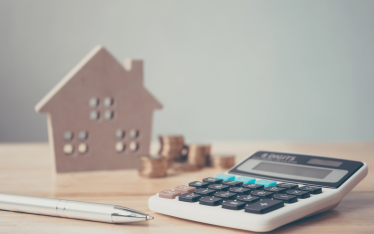Did you know that the level of Australian household debt is one of the highest in the world?
With three-quarters of Australian households in debt and 3-in-10 households considered to be “over-indebted”, debt is an everyday reality for most Australians.
But how many Australians have considered debt management and taken steps to get their debt under control?
If you feel like debt is starting to get the better of you, or are just confused about how best to start managing your debt, then read our top 10 management tips – regardless of your debt size.
1. Admit There’s A Problem
With household debt being so common, it’s easy to get complacent. If you can’t remember what it’s like to not be in debt then you may not think it is a problem.
But if you are regularly spending double or even triple what you earn, that debt is not going to get any smaller any time soon.
If you have multiple credit cards that you can’t seem to clear, or have started to use credit to pay off other loans, you need to press “pause” and admit there is a problem.
Once you have recognised your debt needs managing, then you can start taking steps to work out a debt management program.
2. Work Out The Level of Debt
So, you’ve admitted your debt is problem. What next?
Work out exactly what your level of debt is, and what types of debt you have.
If you don’t have all the original paperwork for credit cards, loans or hire purchases, contact your creditors and ask them to send you the details again.
Using debt calculators can also help you work out exactly what you owe compared with what you earn.
Once you know exactly what you are up against, you can start to do something about it.
3. Prioritise Your Debt
Not all debts are equal.
Some may need paying off sooner than others and some might be costing you more than others.
Credit card debt usually has higher interest rates than some other repayments, and so it might be worth paying those off first.
If you can rank your debt by how much extra they are costing you, then you can begin to identify which are the debts that need paying off first.
4. Make a Bill Payment Calendar
So now you know how much you owe, and which debts you are going to prioritise.
This is great. What next?
Work out when your debt payments are scheduled in during the month and year and work out a realistic payment plan.
Mark you payments on the calendar along with the dates of other expenses and your paycheck. Some payments you may be able to move to a more convenient date in the month after you have been paid.
When you can see the payments scheduled on a calendar you will also be able to the end date for some of the debts, which will make them feel less intimidating.
5. Budget
Now you have worked out the schedule for your debt repayments, you need to make sure you can afford to pay them.
The best way to ensure that is to devise a budget.
It’s easy to lose track of what you are spending on household goods and luxuries. Are you sure you are getting the best prices and deals on your everyday expenses?
If you start carefully monitoring your spending and making even small adjustments and savings it’s amazing what a difference it can make to your monthly outgoings.
Take a look at some of our resources that can help you manage your budget and cash flow and start to take control of your finances.
6. Pay More than the Minimum
It is really important that you at least make the minimum payment each month on your debts. If you don’t, you could incur extra charges or end up defaulting on the loan.
But if you can afford to make more than the minimum payments, you should consider doing so.
Paying more than the minimum stops your debt growing even larger and helps you make progress in paying off the debt.
7. Is it Time to Consolidate?
One way you can make debts easier to manage is to consolidate them.
Consolidating loans means merging a number of debts into one larger debt and only having one repayment schedule.
Depending on the nature of your debts this can reduce monthly payments and lower the amount of interest you pay.
Debt consolidation is not something that works for everyone because sometimes it requires the debt being secured against property. However it could well be worth your while to find out more about consolidated credit.
8. The Last Resort?
Nobody likes to use the ‘B’ word, but bankruptcy can be a last resort.
Bankruptcy usually involves liquidating some of your assets in order to repay as much of your debts as possible, so it is quite a serious measure, but it could help you get back on track.
Bankruptcy is only an option in certain situations depending on your income and circumstances. But if you can apply for it, it may be possible to discharge your debts.
9. Beware of Scams
Debt management scams are becoming an increasing problem. With household debt in Australia rising, people can sometimes be tempted by offers that appear too good to be true.
That’s usually because they are.
Always check the credentials of any debt management company that are offering you services and never feel pressured to say yes to something on the phone if you are not sure.
10. Ask For Help
Sometimes it’s hard to see the wood for the trees, especially when you are worried or stressed. But sometimes it’s too hard to tackle things by yourself and it’s OK to ask for help.
Taking the first steps of admitting you need help with your debts is a really positive move and you should not be afraid to ask for help.
Debt Management Doesn’t Have To Be Scary
By reading these 10 tips you are already on your way to better debt management. It doesn’t have to be a scary process!
Check out our other blog posts that are packed with useful information about how to manage your finances or contact us for more details.









